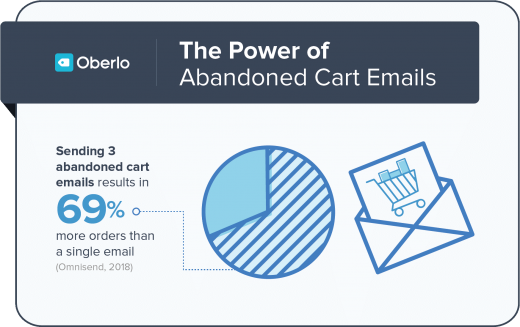25 Email Marketing Statistics You Need to Know Heading into 2020
With an average ROI of 38:1, email marketing continues to be one of the most effective marketing channels. Email has the potential to drive customer acquisition, retention, loyalty and a number of other marketing tactics. However, brands need to keep up with the latest trends and innovations.
Take a look at this list of 25 email statistics to see just how well your strategies rank:
- While email may have great potential, that doesn’t mean it is without its challenges. According to Litmus, some of the biggest challenges include lack of quality data, poor coordination between other departments and channels, insufficient staffing, and limitations of the current email service provider.
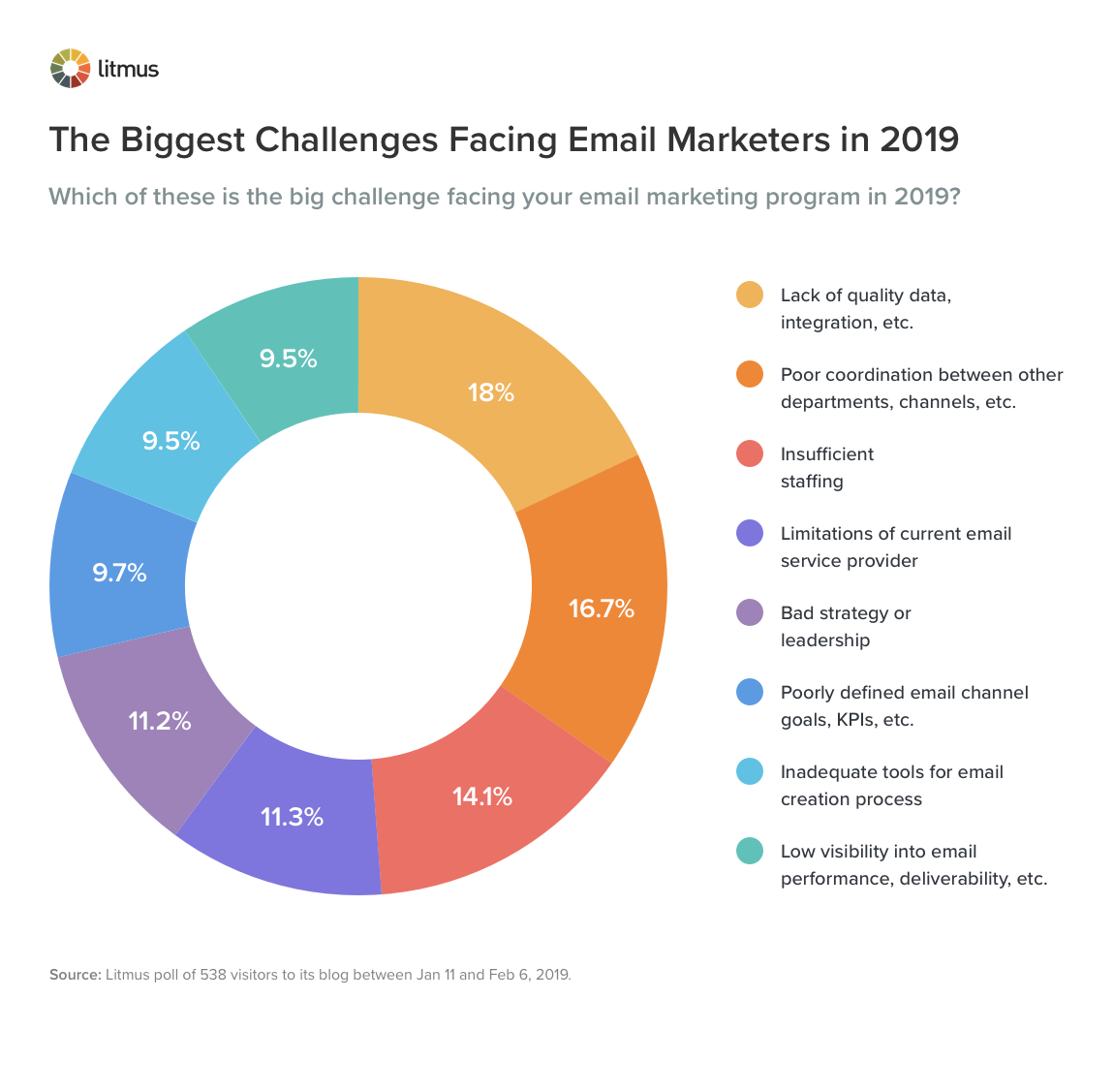
- 67% of email marketers state that their primary objective is to increase engagement, however this is also a top challenge for 50% of email marketers (Convince & Convert)
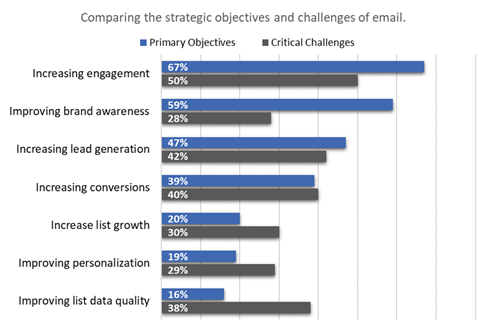
- 62% of marketers believe that personalized messaging is one of the most effective types of email, while 17% believe that plain text email is the least effective.
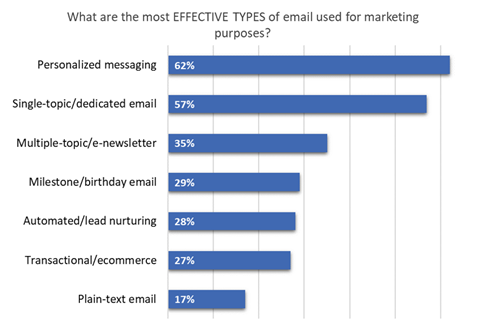
- Email marketers are still finding ways to increase email effectiveness. 15% believe that effectiveness is increasing significantly and 64% believe it is increasing moderately.
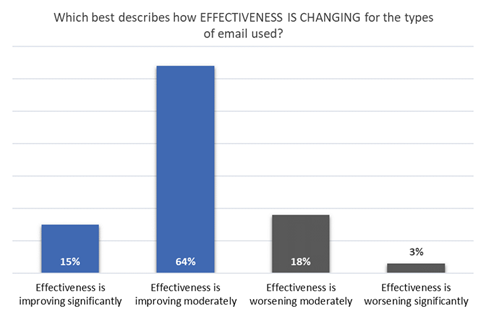
- How are email professionals deploying their emails? Almost half (49%) use a combination of in-house and outsourced providers.
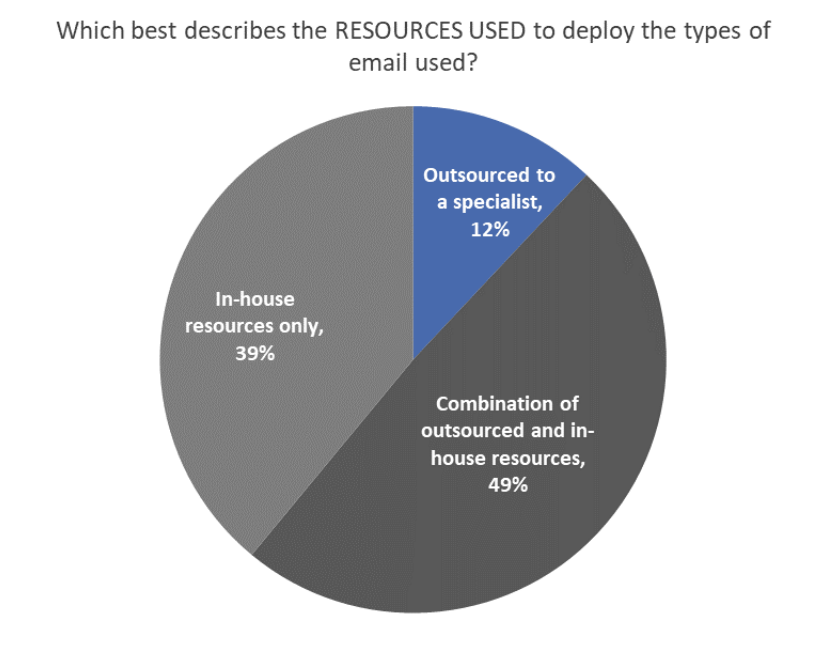
- It’s estimated that the U.S. will spend over 350 million dollars on email advertising in 2019. (Statista, 2019)
- Mobile opens accounted for 46 percent of all email opens. (Litmus.com, 2018)
- 35% of business professionals check email on a mobile device. (Convince & Convert, 2018)
- 80% of business professionals believe that email marketing increases customer retention. (Emarsys, 2018)
- 59% of respondents say marketing emails influence their purchase decisions. (SaleCycle, 2018)
- Marketers who use segmented campaigns note as much as a 760% increase in revenue. (Campaign Monitor, 2019)
- According to 2019 research by Litmus, 40.7% of email marketers plan to focus more on email personalization and dynamic content.
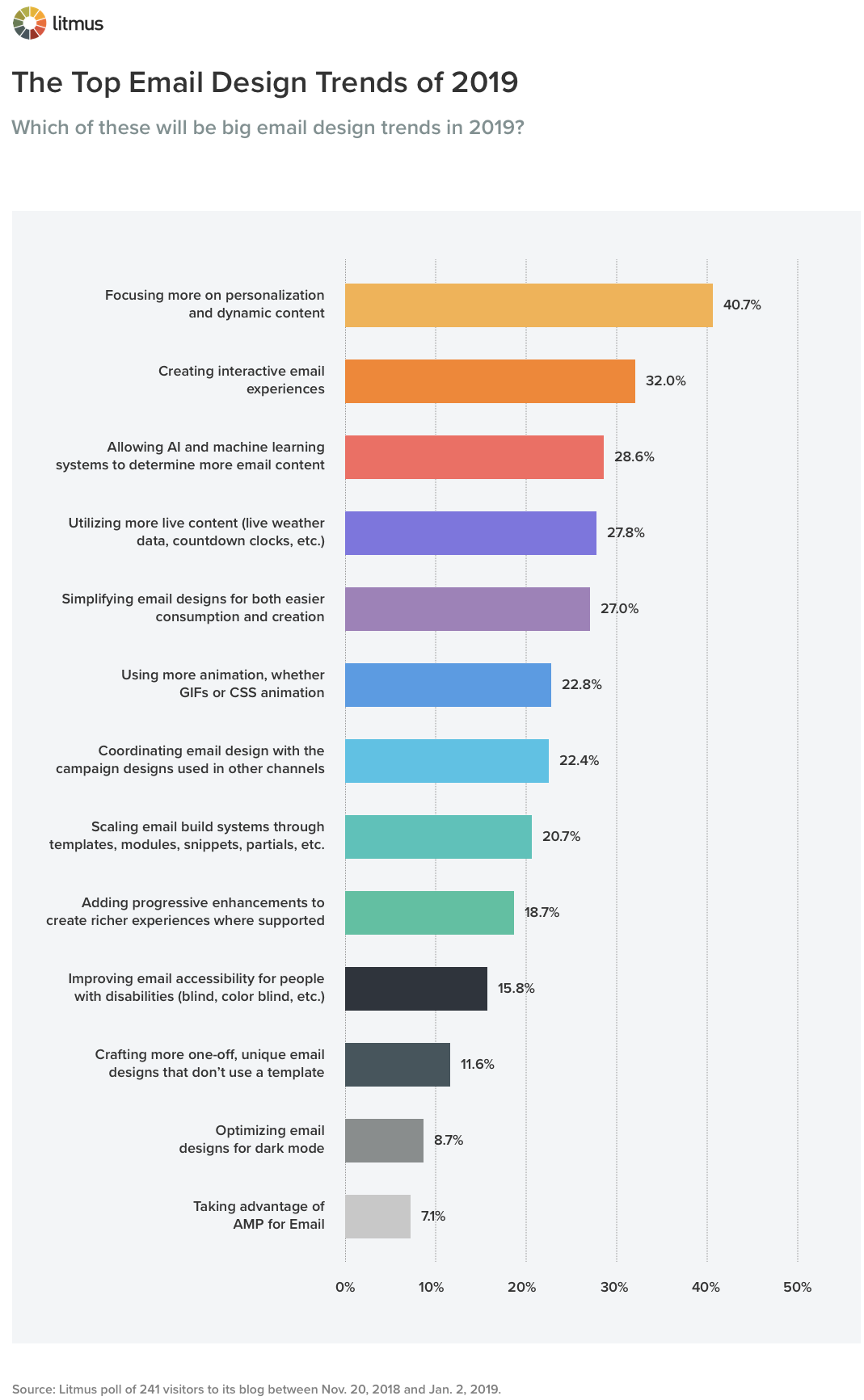
- When it comes to email marketing automation, just 1 in 5 say they use most or all marketing automation features available to them. (Get Response / Smart Insights)
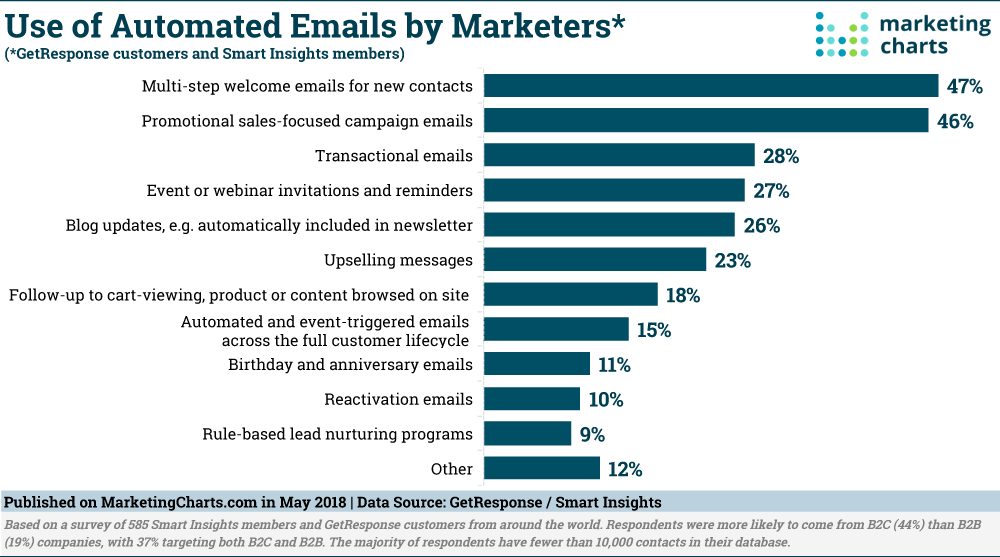
- According to the research, within email, there are two main types of automated emails used. Those are:
* Multi-step welcome emails for new contacts (by 47%)
* Promotional sales-focused campaign emails (by 46%) - 87% of marketers use email campaigns to nurture their audiences. (CMI)
- Sending 3 abandoned cart emails results in 69%more orders than a single email (Omnisend)
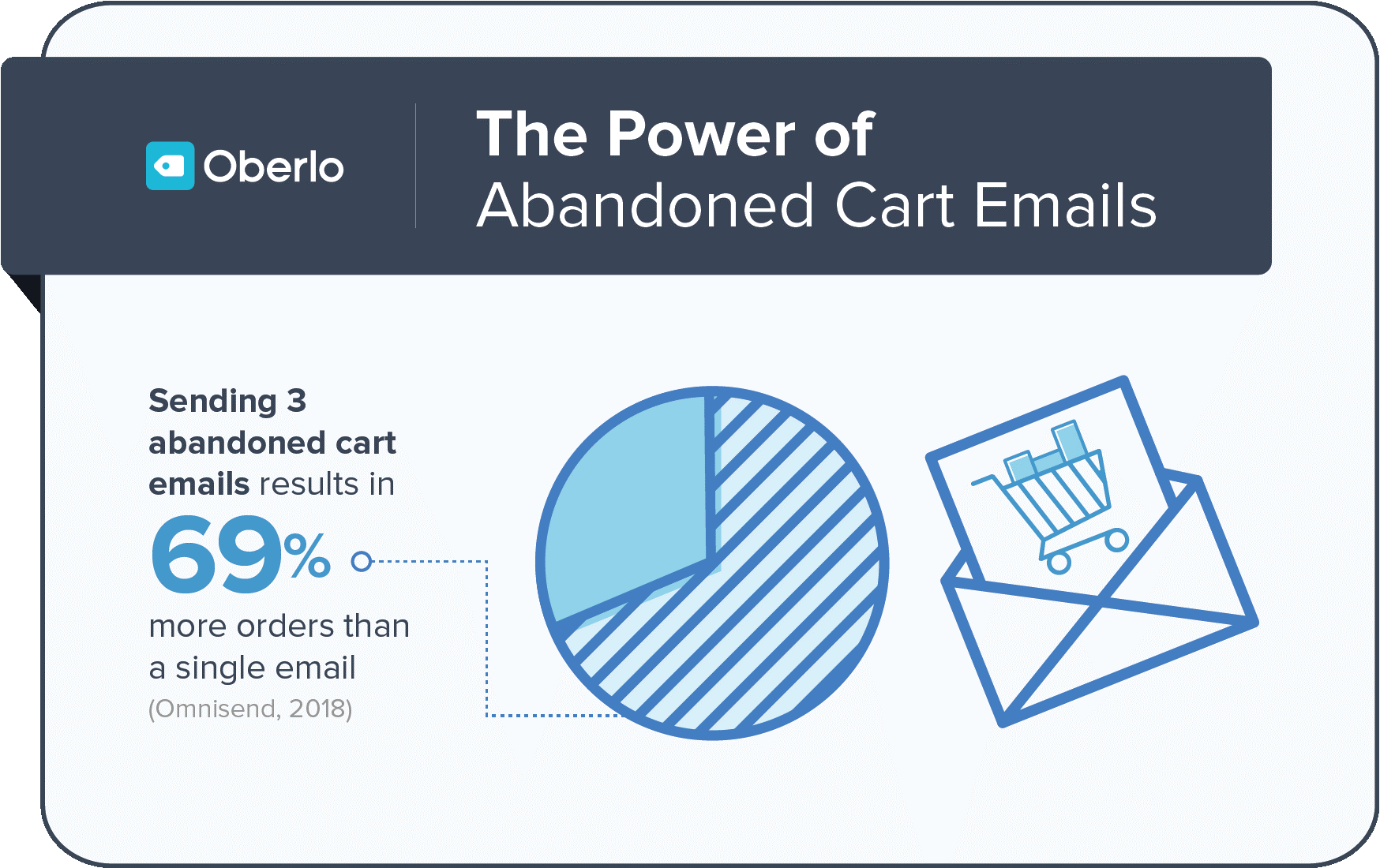
- 68% of millennials say promotional emails have influenced their purchase decisions. (Fluent)
- 55% of consumers like email messages containing relevant products and offers. (LiveClicker)
- In research by The Manifest, almost 70% of businesses use email marketing as part of their campaign strategy. Other key findings:
* Among businesses that participate in email marketing, most send marketing emails either daily (32%) or weekly (41%).
* Businesses send a variety of emails, but product/company updates (69%), promotional emails (69%), newsletters, (68%), and event invitations (65%) are the most popular.
- Something as simple as a personalized greeting can offer a six-fold increase in transaction rate, but 70% of brands still fail to personalize their emails.
- 74% of marketers say targeted personalization increases customer engagement. (eConsultancy)
- Only 39% of online retailers send personalized product recommendations via email. (Certona)
- Emails with personalized subject lines are 26% more likely to be opened. (Campaign Monitor)
- 53% of marketers say ongoing, personalized communication with existing customers results in moderate to significant revenue impact. DemandGen)
- Marketers have noted a 760% increase in revenue from segmented campaigns. (Campaign Monitor)
Interested in learning more about additional marketing strategies and tactics to provide today’s consumers with exceptional experiences? Download the Customer Experience Marketing eBook.
Digital & Social Articles on Business 2 Community
(86)

